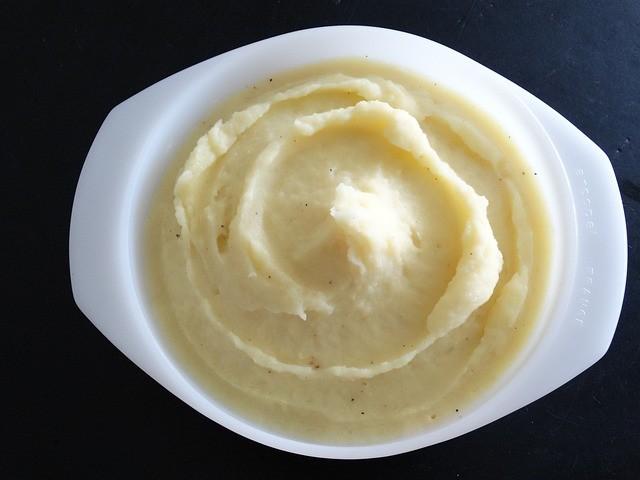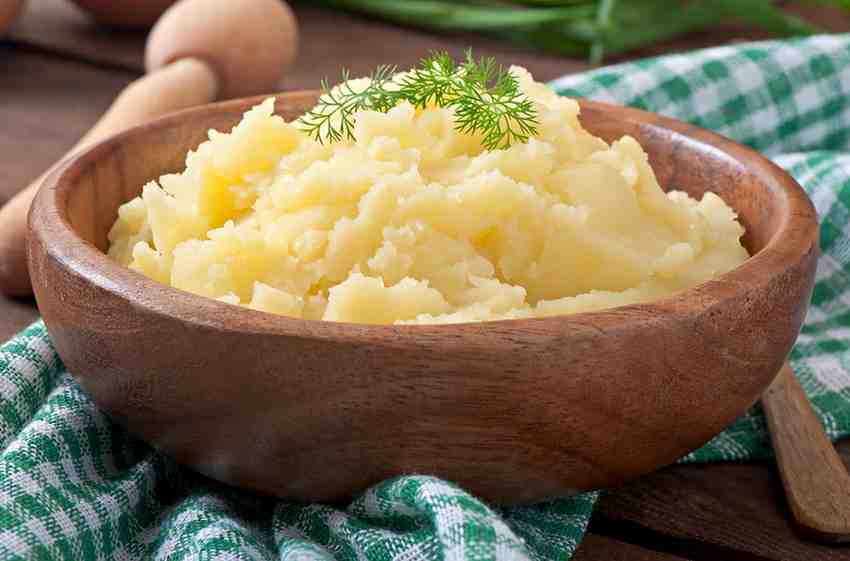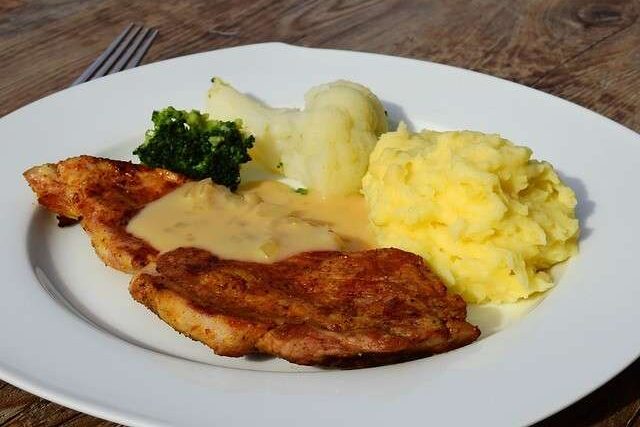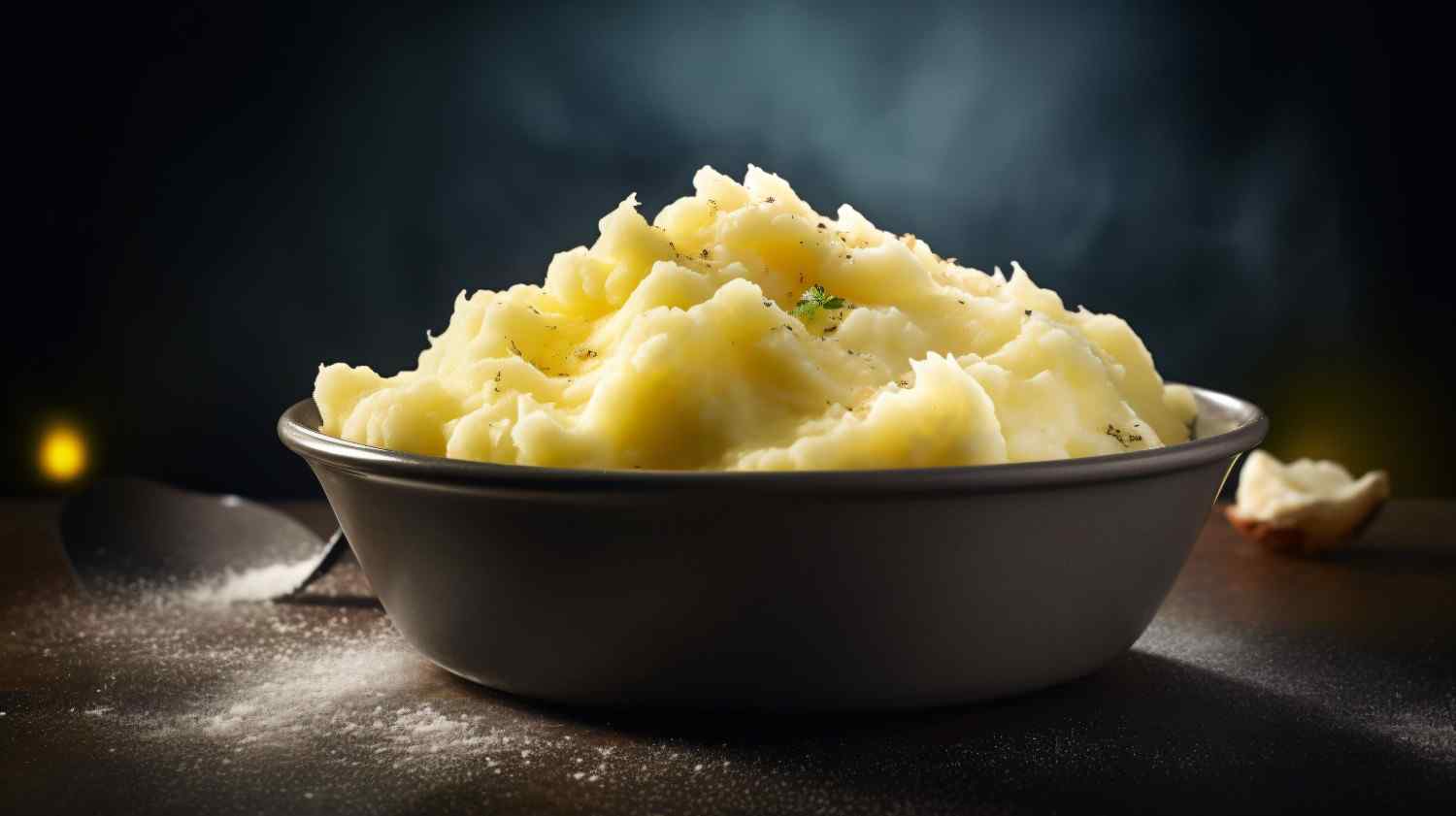Potatoes hold a special place in many kitchens worldwide, yet their preparation varies greatly. French potato purée and American mashed potatoes represent two iconic versions of this beloved side dish. While both aim to create a creamy texture, their methods, ingredients, and final results set them apart. This guide delves into the distinct characteristics of each, helping you understand how to prepare and enjoy these dishes.
What is French Potato Purée?
French potato purée, known as “pommes purée,” is famous for its rich and smooth consistency. Unlike its American counterpart, French purée focuses on creating a refined, almost sauce-like texture, often served in fine-dining settings.
Characteristics of French Potato Purée
- Silky Texture: French purée achieves an exceptionally smooth texture, thanks to its careful preparation.
- Rich Ingredients: It uses large amounts of butter and cream, making the dish rich and luxurious.
- Fine Processing: The purée passes through a potato ricer or food mill, which results in a lump-free, uniform texture.
- Yukon Gold Potatoes: These potatoes work best for purée because they have a creamy nature and blend well with butter and cream.

How to Make It
- Boil the Potatoes: Start with peeled Yukon Gold potatoes. Boil them in salted water until they become tender.
- Rice for Smoothness: Pass the hot potatoes through a ricer or food mill right after boiling. This step ensures a smooth, lump-free consistency.
- Add Butter and Cream: Gradually mix in cold butter and warm cream. Stir the mixture thoroughly to create a creamy and rich emulsion.
- Adjust Consistency: Add more cream or milk slowly until the purée reaches the desired thickness—smooth yet not too dense.
What is American Mashed Potatoes?
American mashed potatoes take a more rustic approach. This dish appears often on holiday tables and pairs well with rich gravies and sauces. The emphasis is on a light, fluffy texture that complements hearty meals.
Characteristics of American Mashed Potatoes
- Fluffy Texture: These mashed potatoes aim for a lighter, airy texture, creating a perfect base for sauces.
- Simple Ingredients: Recipes typically include butter, milk, salt, and pepper, offering a straightforward flavor profile.
- Hand-Mashed or Mixed: A potato masher or hand mixer creates the desired texture, leaving some lumps for a more rustic feel.
- Russet Potatoes: These starchy potatoes work well for mashing, giving a fluffy texture that holds up to mixing.
How to Make It
- Boil the Potatoes: Use peeled russet potatoes, cut into chunks, and boil them in salted water until they soften.
- Mash the Potatoes: Use a potato masher or electric mixer to break down the boiled potatoes. This method allows for some texture variations.
- Mix in Dairy: Pour in warm milk and melted butter, stirring gently to combine. This process helps create a light, airy mash without overworking the potatoes.
- Season to Taste: Add salt and pepper gradually, tasting as you go to ensure the flavors are balanced.

Key Differences Between French Purée and American Mashed Potatoes
Although both dishes start with boiled potatoes, the techniques and ingredients lead to very different outcomes. Let’s explore the core distinctions:
Ingredients: Richness vs. Simplicity
- French Purée: It uses Yukon Gold potatoes and a large amount of butter and heavy cream. The goal is to create a rich and decadent dish that feels indulgent.
- American Mashed Potatoes: Recipes favor russet potatoes for their starchy nature, along with milk and butter. This combination results in a simpler and lighter texture.
Techniques: Precision vs. Practicality
- French Purée’s Precision: Cooks use a ricer or food mill to achieve a uniform, smooth texture. The process requires careful handling to avoid lumps and create a silky purée.
- American Mash’s Simplicity: A potato masher or mixer creates a fluffy texture with less effort. The approach is more relaxed, allowing for a few lumps, which adds to the dish’s charm.
Texture and Consistency: Silky vs. Fluffy
- Silky French Purée: The purée’s creamy, smooth texture makes it a suitable choice for pairing with delicate dishes like roasted meats or fish.
- Fluffy American Mashed Potatoes: The airy texture allows mashed potatoes to absorb rich gravies, making them perfect for holiday feasts or comforting meals.
Equipment: Ricer vs. Masher
- French Purée: A ricer or food mill is essential for achieving the classic French texture. These tools break down the potatoes into a fine, smooth consistency.
- American Mashed Potatoes: A handheld potato masher or mixer works well, providing flexibility over the final texture. The goal is to achieve a fluffy mash without turning it into a paste.
How to Perfect French Potato Purée
Achieving the luxurious, silky texture of French potato purée requires precision and patience. Mastering the technique is key to bringing out the best in this dish. Here’s how to refine your skills for making French purée:
Step-by-Step Technique for a Luxurious Purée
- Use the Right Potatoes: Begin with Yukon Gold potatoes. Their natural creaminess and balanced starch content ensure a smooth finish. Peel the potatoes and cut them into even-sized pieces for uniform cooking.
- Boil Carefully: Place the peeled potatoes in a pot of salted cold water. Bring the water to a gentle boil, then reduce to a simmer. Cooking them slowly ensures the potatoes cook evenly, avoiding a mushy exterior and undercooked interior.
- Rice While Hot: Drain the cooked potatoes and pass them through a potato ricer or food mill while they are still hot. This step is crucial because hot potatoes mash more smoothly, preventing lumps.
- Add Butter Gradually: Incorporate small pieces of cold, unsalted butter into the riced potatoes. Stir vigorously after each addition to emulsify the butter, creating a rich, creamy base.
- Warm the Cream: Heat the cream gently before adding it to the mixture. Warm cream blends better with the hot potatoes, maintaining a smooth texture. Pour it in slowly, stirring until the purée reaches your desired consistency.
- Check for Seasoning: Taste the purée and adjust the salt as needed. French purée traditionally does not include pepper or other spices, allowing the rich, buttery flavor to shine through.
Tips for an Extra Smooth Purée
- Avoid Overworking: Stir the potatoes just enough to incorporate the butter and cream. Overworking releases too much starch, leading to a gluey texture.
- Use a Tamis for Ultimate Smoothness: For those seeking perfection, pass the purée through a tamis (fine mesh sieve) after using a ricer. This step yields a truly silky texture, ideal for gourmet presentations.
- Keep Warm Without Drying: To maintain the purée’s consistency while keeping it warm, place it in a bain-marie (a warm water bath). This method prevents the purée from drying out or forming a crust.
How to Master Classic American Mashed Potatoes
American mashed potatoes offer a more approachable preparation, focusing on comfort and simplicity. Here’s how to achieve the best results:
Step-by-Step Guide for Fluffy Mashed Potatoes
- Select the Right Potatoes: Choose russet potatoes for their high starch content, which produces a fluffier mash. For a slightly creamier texture, you can mix russets with Yukon Golds.
- Peel and Chop Evenly: Peel the potatoes and cut them into uniform chunks. This helps them cook evenly, reducing the risk of overcooked pieces.
- Boil Gently: Place the chopped potatoes in cold, salted water and bring them to a boil. Simmer until the potatoes are tender and easily pierced with a fork. Drain well to prevent watery mashed potatoes.
- Mash While Hot: Use a potato masher or hand mixer to mash the hot potatoes. For a chunkier texture, stick with a hand masher. For a smoother consistency, switch to an electric hand mixer.
- Incorporate Warm Dairy: Heat milk and melt butter before adding them to the mashed potatoes. Adding warm dairy ensures that the potatoes stay light and absorb the liquid better.
- Blend Gently: Mix until the ingredients combine, taking care not to over-mix. The goal is to create a light, airy texture without breaking down the starches too much.
Tips for Light and Fluffy Mashed Potatoes
- Steam Out Excess Moisture: After draining, return the potatoes to the hot pot for a minute or two, allowing excess moisture to evaporate. This step ensures a dryer potato base, which absorbs the dairy more effectively.
- Adjust Butter for Richness: For creamier mashed potatoes, increase the amount of butter. To lighten them, reduce the butter slightly and add a touch more warm milk.
- Flavor Boosts: Add roasted garlic, sour cream, or a touch of cream cheese to enhance the flavor while maintaining the classic texture.
Creative Variations for French Purée and American Mashed Potatoes

While the classic recipes are beloved, adding creative twists can elevate both French purée and American mashed potatoes. Here are some variations that bring new life to these traditional dishes:
French Purée Variations
- Truffle-Infused Purée: Drizzle truffle oil or fold in finely grated truffles for a luxurious twist. The earthy flavor complements the rich butter and cream.
- Herb-Infused Cream: Simmer cream with rosemary, thyme, or bay leaves before adding it to the purée. Strain out the herbs for a subtle, fragrant infusion.
- Cheese-Enhanced Purée: Stir in grated Gruyère or Parmesan for a creamy, cheesy depth that pairs beautifully with roasted meats.
American Mashed Potato Variations
- Loaded Mashed Potatoes: Mix in crispy bacon bits, shredded cheddar cheese, and chopped green onions for a hearty side dish.
- Garlic Mashed Potatoes: Roast garlic cloves and mash them into the potatoes for a rich, savory flavor that enhances the classic taste.
- Buttermilk Mashed Potatoes: Replace some of the milk with buttermilk for a tangy twist. The slight acidity cuts through the richness and adds a unique flavor profile.
Serving Suggestions: Choosing the Right Pairings
Pairing each style of potato dish with the right meal enhances the dining experience. Here’s how to match French potato purée and American mashed potatoes with different dishes:
Best Dishes to Serve with French Potato Purée
- Roasted Duck or Game Meats: The richness of French purée complements the deep, savory flavors of game meats like duck or venison.
- Steak au Poivre: The smooth texture of purée pairs beautifully with the peppery crust and tender interior of steak au poivre, allowing the steak’s juices to blend into the purée.
- Coq au Vin: This classic French dish, with its rich red wine sauce, benefits from the creamy base of potato purée, which absorbs and balances the sauce’s intensity.
Best Dishes to Serve with American Mashed Potatoes
- Thanksgiving Turkey with Gravy: Fluffy mashed potatoes serve as a perfect base for soaking up turkey gravy, making them a must-have at holiday dinners.
- Meatloaf and Brown Gravy: The light, airy texture of mashed potatoes pairs well with meatloaf, especially when topped with a hearty brown gravy.
- Southern Fried Chicken: The crispy, seasoned exterior of fried chicken contrasts nicely with the smooth, buttery texture of mashed potatoes, creating a satisfying combination.
Cultural Significance of French Purée and American Mashed Potatoes
French potato purée and American mashed potatoes not only differ in preparation but also hold unique cultural meanings. Understanding their backgrounds adds a deeper appreciation for each dish.
The Role of Purée in French Cuisine
- Culinary Tradition: French purée represents refinement and luxury, often served in upscale restaurants. It highlights the French philosophy of using high-quality ingredients and precise techniques.
- A Symbol of Mastery: French chefs consider purée a test of skill. Achieving the perfect balance of texture and flavor requires expertise, making it a staple in culinary schools.
- Gourmet Pairings: French purée’s versatility allows it to shine alongside rich dishes. It has become a symbol of elegance, representing the art of French cooking.
American Mashed Potatoes as Comfort Food
- Holiday Staple: American mashed potatoes are a beloved part of holiday meals, especially Thanksgiving. They symbolize warmth, family gatherings, and home-cooked comfort.
- A Simple Pleasure: Unlike the refined nature of purée, mashed potatoes emphasize simplicity and heartiness, appealing to a wide range of tastes.
- Regional Variations: Across the United States, regional variations of mashed potatoes have developed, from garlic-infused versions in the West to cheesy variations in the Midwest.
Frequently Asked Questions
What is the difference between French potato purée and American mashed potatoes?
- French purée is smooth, rich, and made with more butter and cream using a ricer. American mashed potatoes are fluffier, using a masher or mixer with milk and butter.
Which type of potato is best for French purée?
- Yukon Gold potatoes are ideal for purée because of their creamy texture and balanced starch content.
Which type of potato is best for American mashed potatoes?
- Russet potatoes work best due to their high starch content, which produces a light, fluffy texture.
Can I use the same potatoes for purée and mashed potatoes?
- Yes, but results will differ. Yukon Golds create a smoother purée, while russets yield a fluffier mashed texture.
How do I prevent my potato purée from becoming gluey?
- Use a ricer, add cold butter to hot potatoes, and mix gently. Avoid overworking to keep the starch from releasing too much.
How do I make mashed potatoes creamier?
- Increase the butter and use warm cream instead of milk. Adding sour cream or cream cheese can enhance the creamy texture.
Can I freeze leftover French potato purée or mashed potatoes?
- Yes, but the texture may change. Reheat slowly with added cream or butter to restore smoothness.
How long can I store potato purée or mashed potatoes in the fridge?
- Store them in an airtight container for up to 3 days. Reheat with a splash of milk or cream for a smoother consistency.
Should I peel the potatoes before making purée or mashed potatoes?
- Yes, for a smoother texture. However, for rustic mashed potatoes, you can leave the skins on.
What’s the best way to reheat mashed potatoes without losing their texture?
- Reheat slowly over low heat on the stovetop, adding a bit of milk or cream. Alternatively, use the microwave in short intervals, stirring occasionally.

